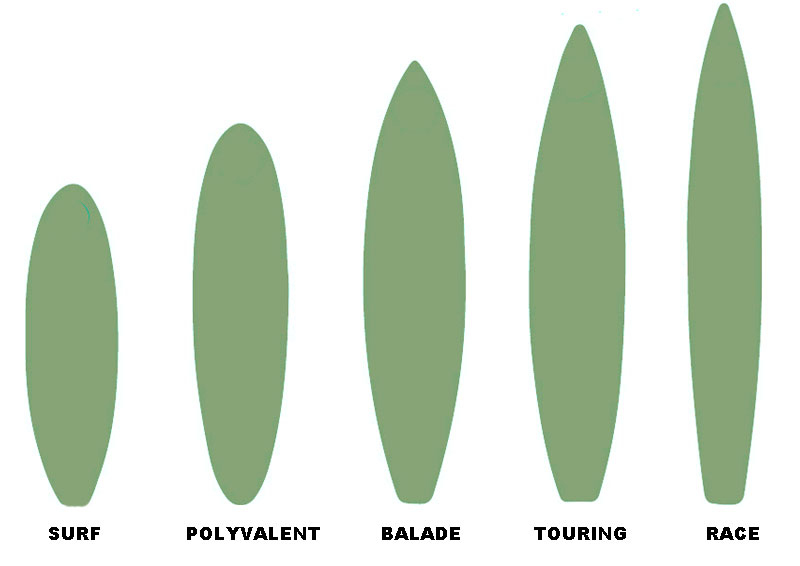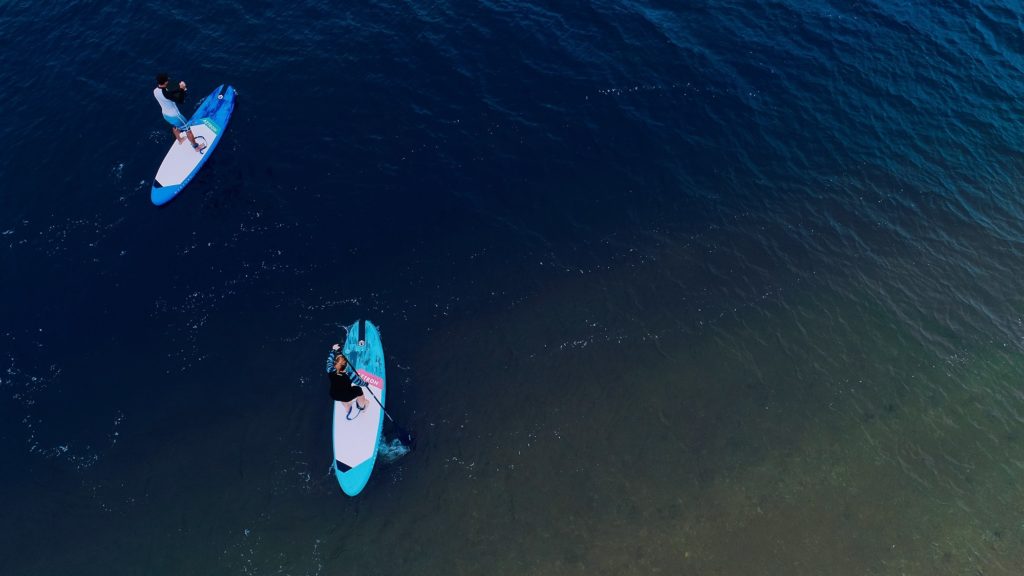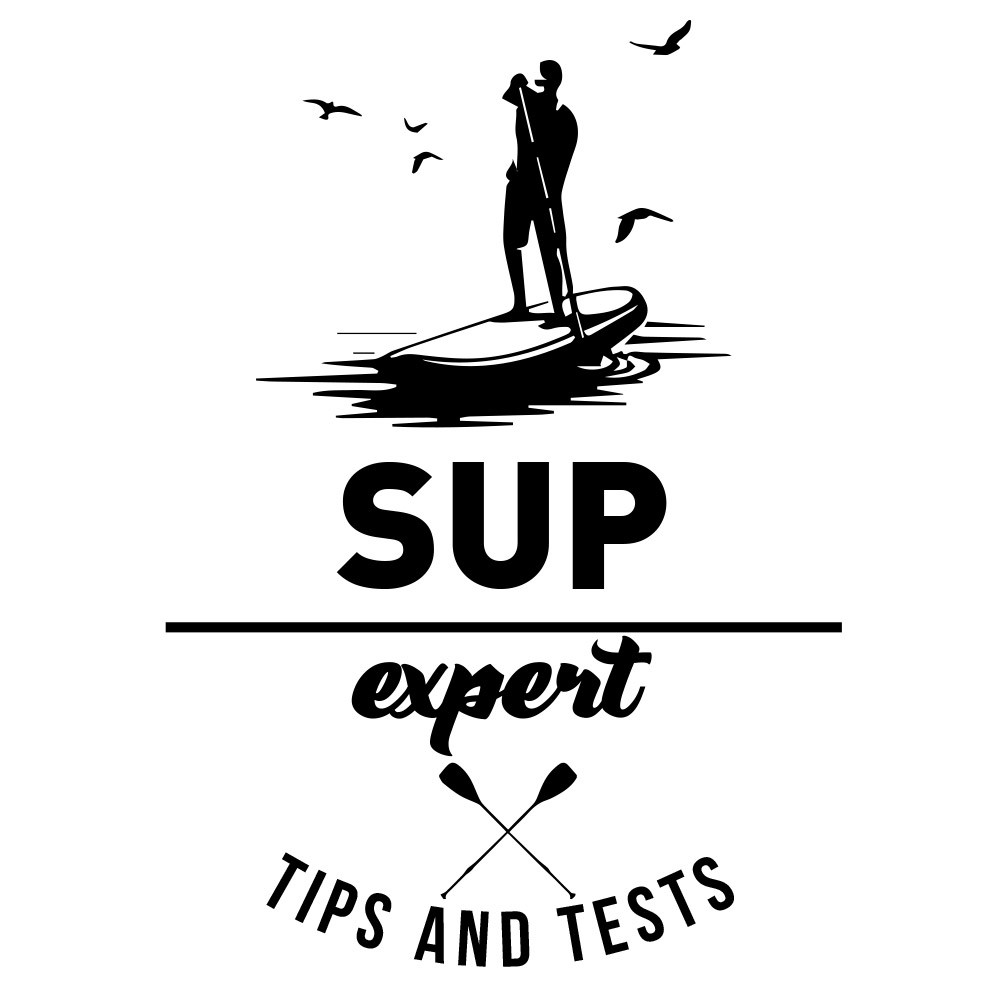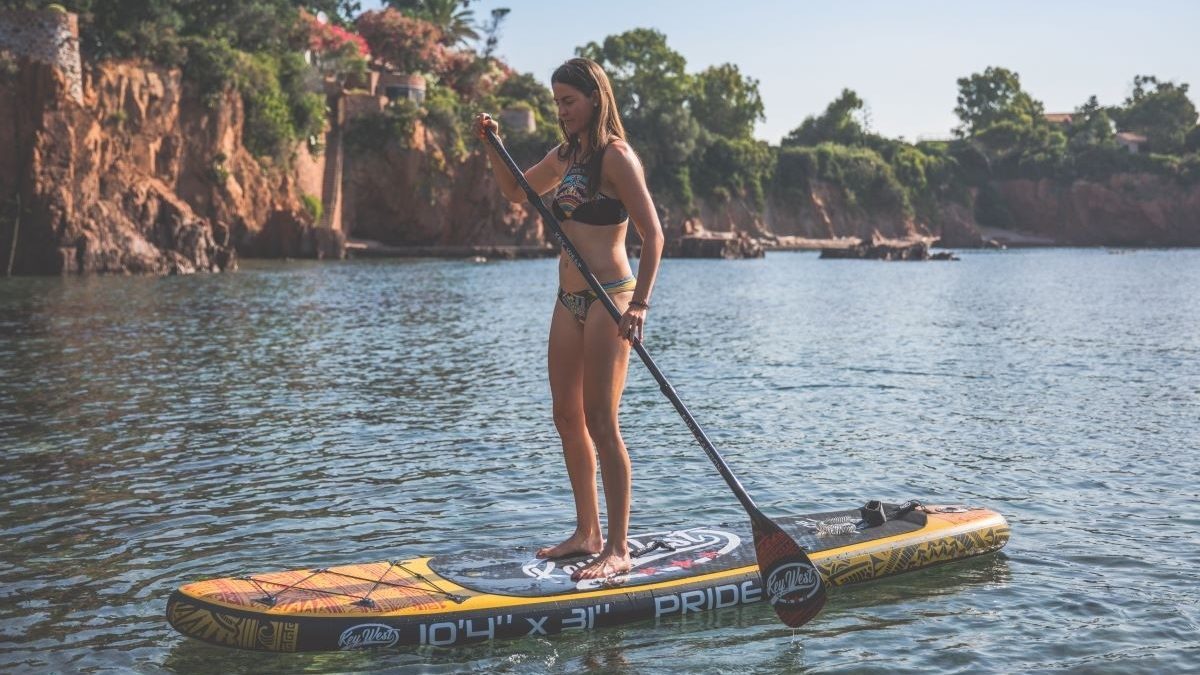You are determined to buy your first paddle board and you are a beginner. Before you go in the water, it is important to target your purchase carefully, as there are a multitude of boards for various practices that adapt to your size and level. To help you find your way around, here are some tips.
Inflatable or rigid paddle board?
The first question to ask when buying a SUP board is the type of construction: inflatable or rigid?
As far as transport and storage are concerned, the advantage is undeniably for the inflatable paddle board. Once the board is deflated, it fits in a backpack in which accessories such as the pump or paddle can also be stored. Moreover, contrary to popular belief, iSUPs are often more resistant than rigid boards. These are sensitive to crushing, to shocks in general and especially to those of your paddle on the rails.
Despite the enormous progress that has been made in recent years in terms of iSUP, there is still a significant difference in performance compared to rigid boards. Rigid ones are more constraining to transport but offer superior sensations and performance.
A SUP for beginner
The all-round SUP is the most popular model, because it is very stable and manoeuvrable. It is ideal for beginners. It allows you to paddle in calm waters and can also surf small waves. It’s the perfect paddle board for families. On the other hand, athletes will blame it for a lack of sensations and end up bored.
If you already practice board sports and have a good balance, you can try some touring boards. This type of SUP board is recommended for a more sporty use. In this range there are two board profiles: on one side we will find the all-round boards, ideal for long tours on stable SUP boards with a light wind grip. On the other side, there are the touring boards similar to the all-round ones with a more streamlined shape for better glide. It is the perfect solution for an intermediate level.
There are of course other SUP models such as race or surf boards. However, these models remain reserved for intensive practice and for experienced practitioners looking for thrills.

What are the criteria when choosing an iSUP?
• Length: this data will establish the navigation program and the handling of the board (contrary to popular belief, size does not affect the stability of the board.) The longer the board is, the better the glide will be. If the board is short, the glide will be worse but the board will be more manageable.
• Width and thickness: this variable affects the stability of the board, the wider and thicker the board, the more stable it will be on the water. Be careful: the width “pushes” the water and the glide is therefore reduced. Width also depends on your size. The bigger you are, the wider the board should be. The most common width is 30″ (76cm) and the thickness is 6″ (15cm).
• Fins : for entry-level SUPs, the fins are fixed to the board with a slide-in system. They can also be glued. The two best solutions are still slide-in fins and US-box fins. A board with 3 fins will stabilize the board and make it more reactive while a board with 1 fin will limit friction and be faster.
• The rider’s size : the larger a board is, the larger its volume will be. A large volume offers a better bearing capacity and therefore big riders will have to choose a large paddle. This point will also help you to choose a PFD.


